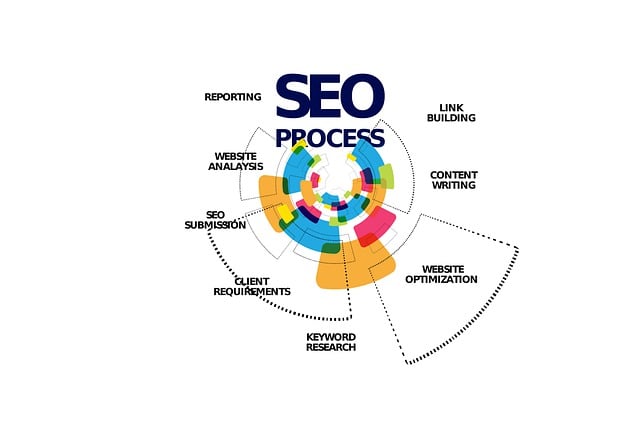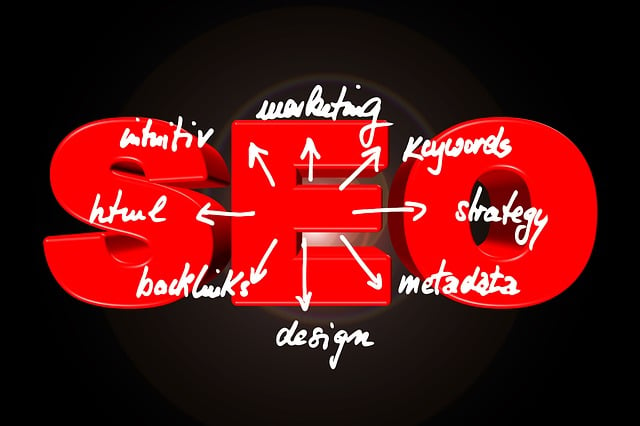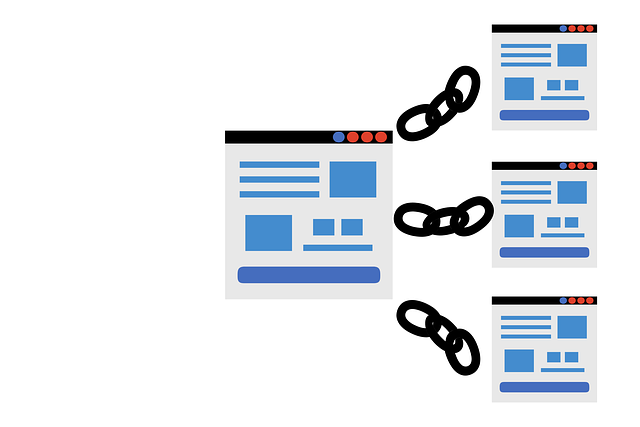Image optimization for SEO
The Importance of Optimizing Images for Search Engine Optimization
Image optimization for search engine is a critical aspect of digital marketing strategy. By ensuring that your images are properly optimized, you can improve your website’s visibility and rankings on search engine results pages. When images are optimized with relevant keywords, descriptive file names, and alt text, it helps search engines understand the content of the images and can lead to better indexing and higher organic traffic.
In addition to enhancing search engine optimization, optimized images also contribute to a better user experience. Faster loading speeds due to compressed images can reduce bounce rates and keep visitors engaged on your website. By incorporating image captions, titles, and structured data, you not only improve SEO but also provide context and relevance to both users and search engines, ultimately driving more traffic and potential conversions to your website.
Understanding Image File Formats for SEO
When it comes to optimizing images for search engine optimization (SEO), understanding the different image file formats is crucial. The most commonly used image file formats for the web are JPEG, PNG, and GIF. Each format has its own strengths and weaknesses that can impact SEO performance.
JPEG is best suited for photographs and images with many colors, as it provides a good balance between image quality and file size. PNG is ideal for images with transparency or sharp edges, but it tends to have larger file sizes. GIF is primarily used for simple images or animations but has limitations in terms of color depth. By selecting the appropriate file format based on the type of image being used, you can ensure that your images are optimized for both visual appeal and SEO effectiveness.
Choosing the Right Image Size for SEO
Images are a crucial component of a website’s visual appeal, but their size can significantly impact SEO performance. When selecting the appropriate image size for SEO, it’s essential to strike a balance between high-quality visuals and fast loading times. Large, high-resolution images can enhance user experience but may result in longer loading times, potentially affecting your site’s search rankings. On the other hand, small, low-quality images may load quickly but can compromise the visual appeal of your website.
To optimize image size for SEO, consider resizing images to the dimensions required for display on your website. Avoid uploading images that are larger than what is necessary, as this can slow down loading times. Additionally, be mindful of compressing images without sacrificing visual quality to ensure optimal performance. By selecting the right image size for SEO, you can improve user experience, reduce bounce rates, and enhance your website’s overall SEO performance.
Using Descriptive File Names for Images
When it comes to optimizing images for search engine visibility, using descriptive file names is a crucial step in enhancing your website’s SEO performance. A descriptive file name provides valuable context to search engines about the content of the image, making it easier for them to index and rank your visuals appropriately. Instead of generic names like “IMG_1234.jpg,” opt for specific and relevant titles that accurately describe the image content, such as “red-velvet-cake-slice.jpg” for a picture of a dessert.
By incorporating descriptive file names for your images, you not only improve your SEO efforts but also enhance user experience on your website. When users can understand the content of an image just by looking at the file name, it adds to the overall accessibility of your site. Additionally, descriptive file names can attract more organic traffic by aligning your visuals with relevant search queries. Remember to use keywords that are related to the image subject matter while keeping the file names concise and descriptive to maximize the SEO benefits.
Utilizing Alt Text for Image Optimization
Alt text, short for alternative text, serves a crucial role in optimizing images for search engines. It provides a textual description of an image, allowing search engine crawlers to understand the content and context of the image. When crafting alt text, it is essential to be descriptive and concise, accurately depicting the image’s content and purpose. By incorporating relevant keywords naturally into the alt text, you can enhance the image’s SEO value, making it more discoverable in search results.
Furthermore, alt text plays a vital role in web accessibility, providing visually impaired users with a text-to-speech description of images on a webpage. By utilizing descriptive alt text, you not only improve your SEO efforts but also ensure that all users, regardless of disabilities, can access and comprehend the content of your website. Remember that alt text should complement the image, not just be a string of keywords, as it plays a significant role in both SEO and user experience.
Compressing Images for Faster Loading Speed
To ensure optimal website performance, it is crucial to compress images for faster loading speed. By reducing the file size of images without compromising on quality, you can significantly improve user experience and website speed. Large image files can slow down page loading times, leading to higher bounce rates and lower rankings on search engine results pages.
Image compression techniques such as using compression tools or selecting the right file format can help improve loading speed without sacrificing image clarity. By making use of efficient compression methods, you can strike a balance between high-quality visuals and fast loading times, resulting in a seamless user experience that is also favored by search engines for better SEO performance.
Implementing Image Captions for SEO Benefits
When it comes to optimizing images for search engine optimization (SEO), implementing image captions can significantly enhance the SEO benefits of your website. Image captions provide an opportunity to add relevant textual content that describes the image and its context, making it easier for search engines to understand the content of the image. This additional information can help improve the visibility of your images in search results and drive more organic traffic to your website.
Moreover, well-crafted image captions can also enhance user experience by providing valuable context for visually impaired users who rely on screen readers to access content. By including descriptive and relevant image captions, you can make your website more accessible and user-friendly, which can positively impact your SEO efforts. In addition to providing SEO benefits, image captions can also add a layer of professionalism and credibility to your website, helping to engage visitors and encourage them to spend more time exploring your content.
Utilizing Image Titles for SEO Enhancement
Image titles play a crucial role in enhancing the search engine optimization (SEO) of images on a website. When assigning titles to images, it is essential to be descriptive and relevant to the content of the image. A well-crafted image title not only provides context to search engines about the image but also improves user experience by accurately representing the visual content.
In order to maximize SEO benefits, it is recommended to use keywords strategically in image titles. Relevant keywords help search engines understand the topic of the image and can improve the chances of the image appearing in relevant search results. By incorporating targeted keywords in image titles, website owners can enhance their SEO efforts and drive more organic traffic to their websites through image searches.
Incorporating Image Sitemaps for SEO
Generating an image sitemap is a crucial aspect of optimizing images for search engine optimization (SEO). By including image URLs, metadata, and other relevant information in the sitemap, you are helping search engines better understand and index your images. This, in turn, can lead to improved visibility and ranking in image search results, ultimately driving more organic traffic to your website.
Furthermore, incorporating image sitemaps can also enhance the overall user experience on your website. When search engines can easily discover and display your images in relevant search queries, it increases the chances of users engaging with your content. This can result in higher click-through rates, prolonged user sessions, and potentially more conversions. Therefore, investing time and effort into setting up image sitemaps as part of your SEO strategy can yield significant benefits in terms of both search engine visibility and user engagement.
Optimizing Images for Mobile SEO
When it comes to optimizing images for mobile SEO, one crucial aspect to consider is choosing the right image size. Mobile users expect fast loading times, so using images that are appropriately sized for mobile devices can significantly improve page speed and user experience. By ensuring that images are compressed and resized for mobile viewing, you can enhance your site’s performance on smartphones and tablets.
Additionally, incorporating descriptive file names and alt text for images is essential for mobile SEO. Search engines rely on this information to understand the context of an image since they cannot “see” images like humans do. By providing descriptive file names and alt text that accurately describe the image, you can improve your chances of appearing in relevant search results on mobile devices. Remember, optimizing images for mobile SEO is not just about visual appeal but also about enhancing the overall user experience and search engine visibility.
Considering Lazy Loading for Image Optimization
Lazy loading is a technique used in web development to improve website performance by delaying the loading of non-essential resources, such as images, until they are needed. From an SEO perspective, implementing lazy loading for images can help reduce the initial page load time, which is a key factor in improving user experience and search engine rankings. By loading images only when they come into the view of the user, lazy loading can significantly enhance the overall speed and performance of a website.
One of the main benefits of using lazy loading for image optimization is that it helps conserve bandwidth and reduces unnecessary data transfer. This is particularly advantageous for mobile users or those with slower internet connections, as it allows the website to load more quickly and smoothly. Additionally, Google and other search engines consider page speed as a ranking factor, so by implementing lazy loading for images, webmasters can potentially boost their SEO performance and provide a better user experience simultaneously.
Utilizing Structured Data for Image SEO
Structured data markup is a critical tool for optimizing images for search engine optimization. By leveraging schema.org markup, website owners can provide search engines with essential information about the images on their site, such as the subject matter, author, and licensing details. This structured data enhances the context and relevance of images, ultimately improving their visibility in search results.
Implementing structured data for image SEO also helps to enhance the overall user experience by enabling features like rich snippets, which can display additional information about the image directly in the search results. This additional context can help users make more informed decisions about which results to click on, increasing the likelihood of engagement with the content. Additionally, structured data markup for images can facilitate inclusion in image-based search features, further increasing the exposure and reach of visual content online.
Avoiding Keyword Stuffing in Image Descriptions
Keyword stuffing in image descriptions refers to the unethical practice of excessively repeating keywords in an attempt to manipulate search engine rankings. This outdated tactic not only hampers the user experience but also risks penalties from search engines for spammy content. It is crucial to remember that the main purpose of image descriptions is to provide accurate information about the image to both search engines and users, enhancing accessibility and relevance.
Rather than focusing solely on cramming keywords into image descriptions, prioritize using natural language and relevant phrases that effectively describe the image content. By incorporating descriptive and informative text that aligns with the context of the image, you can improve the overall user experience and increase the likelihood of your images being correctly indexed by search engines. Remember that a balanced and organic approach to crafting image descriptions will not only benefit your SEO efforts but also enhance the overall quality of your website’s content.
Utilizing Image CDN for Improved SEO Performance
Content Delivery Networks (CDNs) play a crucial role in enhancing website performance, particularly when it comes to image optimization for SEO purposes. By utilizing an image CDN, website owners can improve loading speeds, reduce latency, and ultimately enhance the overall user experience. This is achieved by distributing image content across various servers globally, ensuring that users can access images quickly regardless of their location.
In addition to improving user experience, employing an image CDN can have a significant impact on search engine optimization. Faster loading speeds not only please users but are also favored by search engine algorithms, potentially boosting a website’s rankings in search results. By leveraging an image CDN, website owners can ensure that their images are delivered swiftly and efficiently, contributing to improved SEO performance and overall site visibility.
Monitoring Image SEO Performance with Analytics
Analyzing the performance of images on a website is crucial for effective search engine optimization (SEO) strategies. Utilizing analytics tools provides valuable insights into how images are contributing to the overall SEO efforts. By monitoring image SEO performance with analytics, businesses can track metrics such as image search traffic, engagement rates, and conversions. This data enables informed decision-making to improve image optimization techniques and drive better visibility in search engine results.
Furthermore, analytics tools offer the opportunity to identify trends and patterns in image performance over time. By closely monitoring key performance indicators related to images, such as page load times and bounce rates, website owners can make targeted improvements to enhance user experience and ultimately boost SEO rankings. With the data obtained from image SEO analytics, businesses can continuously refine their strategies to ensure that images are effectively contributing to the overall SEO success of the website.






